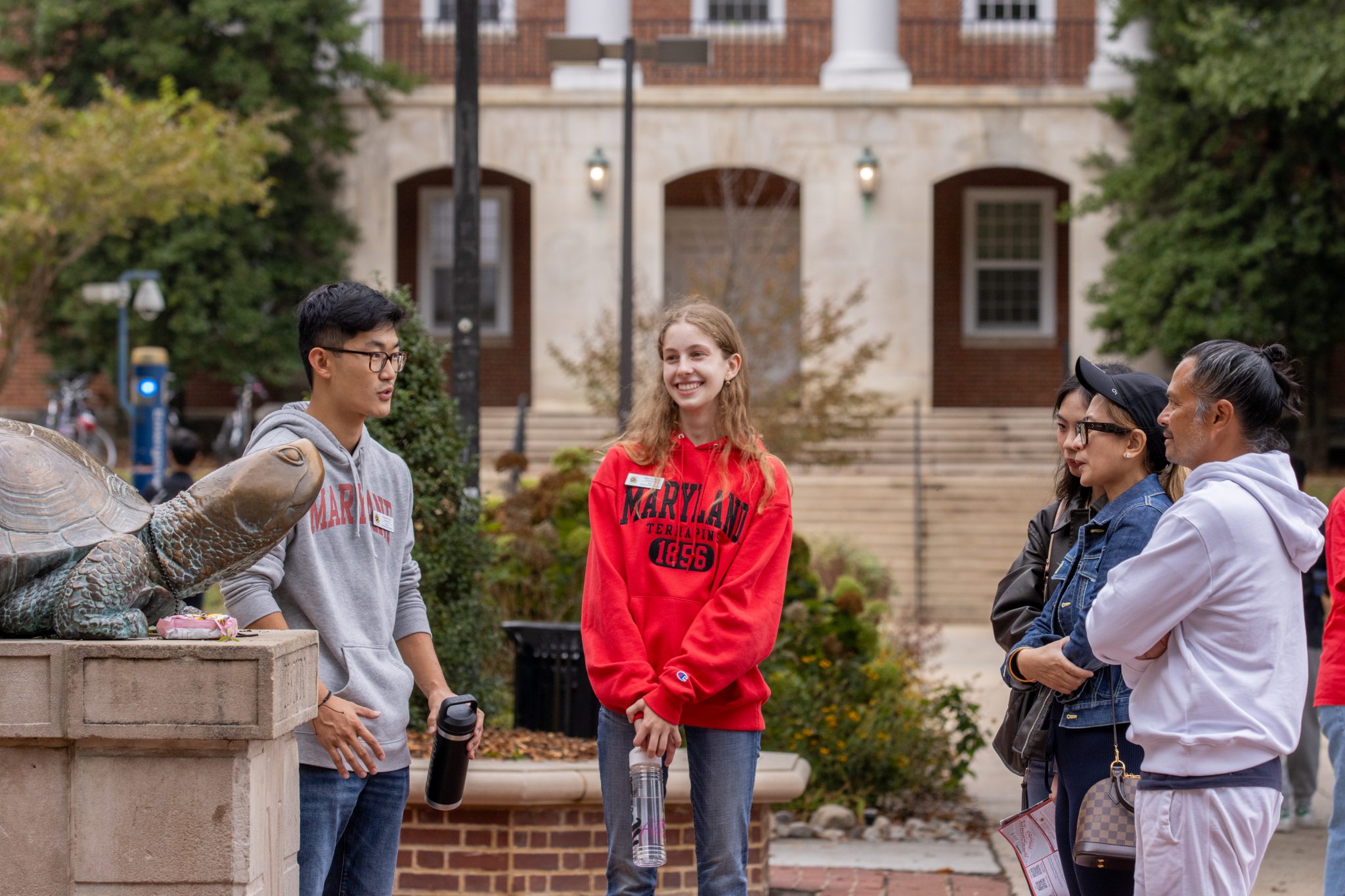Maryland Images — the student-led group that formerly ran campus tours — shifted to a new paid model this fall that has left current and former tour guides with mixed feelings.
After 40 years, Maryland Images, which comprised about 150 students, was disbanded over the summer and replaced with a model that pays tour guides $17 an hour. The new model employs about 50 students this fall, a third of the number employed in the past.
While the new model is still developing, some current tour guides said the change is a net positive, even though it is a work in progress.
“It’s not perfect and it never was gonna be perfect,” former Imager and current tour guide Jadon Trackim told The Diamondback. “But I think everybody in the [undergraduate admissions office] has done an amazing job.”
Maryland Images members sent the university a letter in February demanding to be paid minimum wage. After members who signed the letter threatened to strike during March — a busy month for tours — the undergraduate admissions office transitioned to a paid model.
“During the spring semester, the [undergraduate admissions office] collaborated with senior leadership and Maryland Images to outline the transition to the paid model over the summer,” the office wrote in a statement to The Diamondback.
[Maryland Images’ shift to paid, student-employee model leads to fewer campus tour guides]
The new model disbanded Maryland Images as a student organization and required tour guides to complete a minimum of two tours a week, according to the undergraduate admissions office. Trackim, a junior computer science major, said he gave about five tours a semester with the unpaid model.
Some former Imagers reapplied immediately over the summer, but others, including Sam Benning, decided not to reapply.
“Without that large community of people, it just wasn’t worth it for me personally … because now it became an obligation, instead of something that I was passionate about,” Benning, a junior operations, management and business analytics major, said. “It really ruined it for me.”
While he was passionate about being a tour guide, Benning said the increase in required tours did not fit into his schedule.
“I really thought the organization would have been pretty much the same, but with some money attached to it,” Benning said.
During one of his tours, Benning said he met Will Preddice, a then-prospective student. Preddice, now a sophomore kinesiology major, stayed in contact with Benning and later joined Maryland Images himself. Now a paid tour guide, Preddice said giving tours has become more of a job under the new model.
Preddice said although he appreciates the push for a consistent tour schedule, the number of required weekly tours is harder to manage. Some weeks, it is difficult to complete at least one tour, Preddice said.
“I felt like I was able to have more freedom with what it was last semester,” Preddice said.
[UMD tour guides will be paid starting this fall]
Since the paid model is a student-employee organization, the transition has resulted in no DEI or social events so far, which has led to a different culture, Trackim said.
Preddice added the lack of social and DEI events in favor of more hours has prevented him from meeting more members of the organization.
But some former Imagers and current tour guides, including Kara Gardiner, said they were excited by the organization’s shift.
Gardiner, a senior behavioral and cognitive neuroscience major, said she thought the transition has been “really good.” She now knows more tour guides better because she sees them more frequently, she added.
“They provided us with more training which I thought was super helpful and gave me a lot of really good tips to make my tours even better,” Gardiner said.
Tours are higher quality and more consistent under the paid model through support from staff and tour guide coordinators, according to the undergraduate admissions office.
Former Imager and current tour guide Anabel Holguin said she was originally unsure how the transition would work, but saw it as an overall benefit to tour guides. The support systems in place for tour guides are not any worse than they were before, the junior psychology major said.
Moving forward, Holguin hopes the new model will grow in other ways to ensure money isn’t the only motivator for interested students.
“I just want to keep seeing students, across all grades and colleges and backgrounds, be recruited who have that same passion we had in Maryland Images,” Holguin said.



